
The Church of St Mary the Virgin, widely known as St Mary Redcliffe, is the main Church of England parish church for the Redcliffe district of the city of Bristol, England. The first reference to a church on the site appears in 1158, with the present building dating from 1185 to 1872. The church is considered one of the country's finest and largest parish churches as well as an outstanding example of English Gothic architecture. The church is so large it is sometimes mistaken for Bristol Cathedral by tourists. The building has Grade I listed status, the highest possible category, by Historic England.

Holy Sepulchre London, formerly and in some official uses Saint Sepulchre-without-Newgate, is the largest Anglican parish church in the City of London. It stands on the north side of Holborn Viaduct across a crossroads from the Old Bailey, and its parish takes in Smithfield Market. During medieval times, the site lay outside ("without") the city wall, west of the Newgate.

Priory Church of St Mary, Bridlington, grid reference TA177680, commonly known as Bridlington Priory Church is a parish church in Bridlington, East Riding of Yorkshire, England, in the Diocese of York. It is on the site of an Augustinian priory founded in 1113 which was dissolved during the Dissolution of the Monasteries. In 1951 it was designated a Grade I Listed Building.

All Saints' Church, Nottingham, is an Anglican church in Nottingham, England.

St Martin in the Bull Ring is a Church of England parish church in the city of Birmingham, West Midlands, England. It is the original parish church of Birmingham and stands between the Bull Ring Shopping Centre and the markets.

St Peter's Church is a church in Brighton in the English city of Brighton and Hove. It is near the centre of the city, on an island between two major roads, the A23 London Road and A270 Lewes Road. Built from 1824–28 to a design by Sir Charles Barry, it is arguably the finest example of the pre-Victorian Gothic Revival style. It is a Grade II* listed building. It was the parish church of Brighton from 1873 to 2007 and is sometimes unofficially referred to as "Brighton's cathedral".

St Peter's Church is a Church of England parish church located in the centre of Bournemouth, Dorset, England. It is a Grade I listed building classed as a 'major parish church', and was completed in 1879 to a design by George Edmund Street as the founding mother church of Bournemouth.
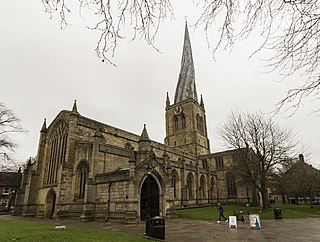
Chesterfield Parish Church is an Anglican church dedicated to Saint Mary and All Saints, in Chesterfield, Derbyshire, England. Building of the church began in 1234 AD, though the present church dates predominantly from the 14th century. Designated a Grade I listed building in 1971, St Mary's is best known for its twisted and leaning spire. It is the largest parish church in the Diocese of Derby and forms part of the Archdeaconry of Chesterfield. In 1994, it also became the UK's only representative in the Association of the Twisted Spires of Europe; of the 72 member churches, it is deemed to have the greatest lean and twist.

St Wilfrid's Church, Harrogate is an Anglican parish church in the town of Harrogate, North Yorkshire, England. It is a Grade I listed building, the only such building in Harrogate. It was designed by the architect Temple Lushington Moore and is one of his best-known works. It is designated as a "Major Parish Church" and is the 38th largest parish church in England.
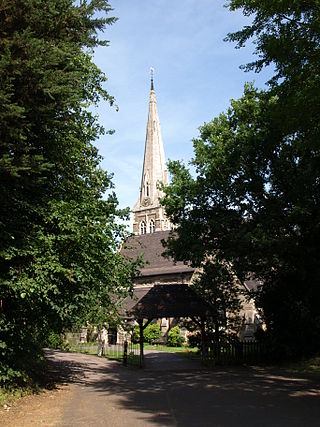
St. Mary's Church, Selly Oak is a Church of England parish church in Selly Oak, Birmingham, England.
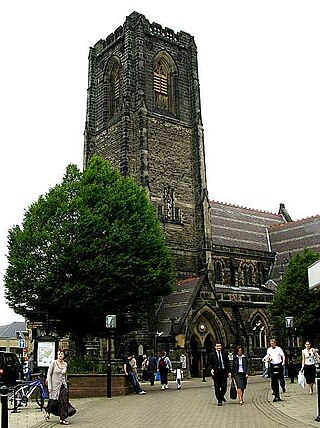
St Peter's Church, Harrogate is a parish church in the Church of England located in Harrogate, North Yorkshire, England. It is a Grade II listed building.

Christ Church, High Harrogate is a parish church in the Church of England located in Harrogate, North Yorkshire, England. It was the first church building to be built in Harrogate and is today home to a thriving congregation and – along with the attached Parish Centre – an important focus of community activities.

James Jepson Binns was a pipe organ builder based in Leeds, West Yorkshire, England.

St Bartholomew's Church, Armley is a parish church in the Church of England in Armley, West Yorkshire. The church is one of two Church of England churches in Armley; the other being Christ Church. Worship at St Bartholomew's is firmly rooted in the Anglo-Catholic tradition of the Church of England with a solemn mass being celebrated weekly.

St Mary and All Saints’ Church, Kidderminster is a Grade I listed Major Parish Church in the Church of England in Kidderminster, Worcestershire, England.
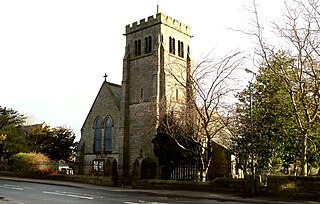
The Church of St Michael and All Angels, Beckwithshaw, North Yorkshire, England, also known as Beckwithshaw Church, is an Anglican church built and furnished between 1886 and 1887 by William Swinden Barber in the Gothic Revival style as part of the Arts and Crafts movement. The stained glass windows in the same style were added in 1892. The church is listed as a Grade II historic structure; it is a pristine and unchanged example of an Arts and Crafts church retaining all its original furnishings, apart from one missing statue. However, in 2018 the church officers gained planning permission for changes which included removing all of the original pews. The first vicar of this church, from 1887 to 1894, was Charles Farrar Forster.

St Saviour's Church, on St Saviourgate in York, also known as St Saviour in the Marsh is a Grade II* listed former parish church in the Church of England in York.
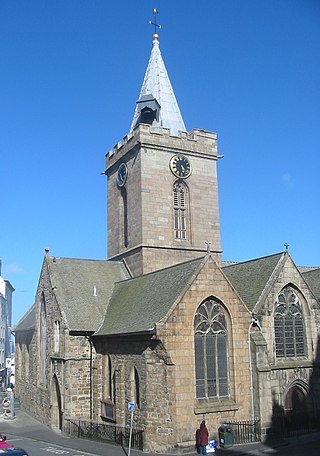
The Town Church is also known as the "Parish Church of St Peter Port", "Sancti Petri du Portu" and "Town Church of St Peter, Apostle & Martyr".

The Church of All Saints, Harlow Hill, Harrogate, North Yorkshire, England, is a grade II listed mission church, or chapel of ease, completed in 1871 on land donated by Henry Lascelles, 4th Earl of Harewood, within the parish of St Mary. It was consecrated by the Bishop of Ripon in 1871. The building was designed with a round bell tower, in Gothic Revival style, by Isaac Thomas Shutt and Alfred Hill Thompson. After some years of closure due to structural problems, as of 2014 it was being restored for use by a funeral director's company.
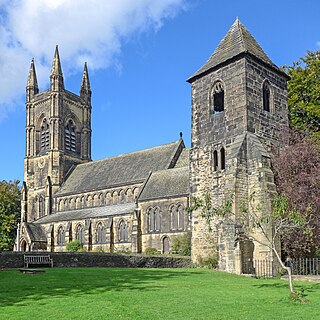
St Mary's Church is the parish church of the town of Mirfield in West Yorkshire, England. The current building is a large Gothic Revival structure designed by Sir George Gilbert Scott, replacing an older structure, the tower of which still survives a short distance from the present building. These structures form Mirfield's most prominent landmark and both are listed for preservation by Historic England, the old church tower as Grade II and the present building as Grade II*.





















